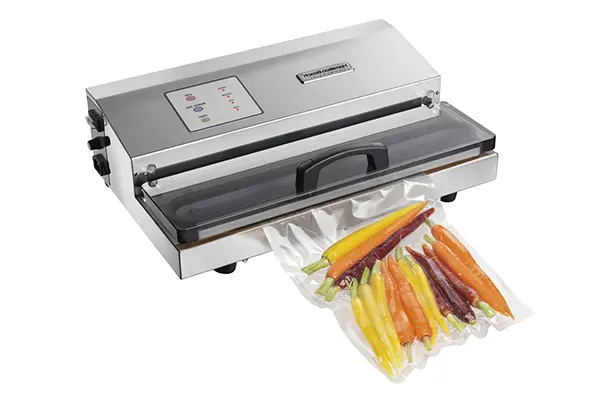When it comes to packaging and preserving goods, machine vacuum packing is a popular choice for many industries. It helps extend the shelf life of products, prevents spoilage, and ensures freshness. However, when deciding between heat sealing and vacuum sealing, it’s important to understand the differences and advantages of each method. In this article, we’ll explore the pros and cons of heat sealing and vacuum sealing in machine vacuum packing, helping you make an informed decision for your specific packaging needs. So, let’s dive in and uncover which method suits you best!
Heat Sealing: Keeping It Secure
Understanding Heat Sealing
Heat sealing is a packaging method that involves using heat to melt and seal the packaging material, creating a secure and airtight seal. It typically requires the use of heat sealable bags or films that can be easily sealed with the application of heat. Heat sealing machines utilize heated sealing bars that press together, creating a seal that fuses the packaging material.
Advantages of Heat Sealing
Heat sealing offers several advantages for machine vacuum packing. Firstly, it provides a strong and reliable seal that prevents air and moisture from entering or escaping the package. This ensures the freshness and quality of the packaged goods. Moreover, heat sealing is a versatile method that can be used with various packaging materials, including plastic films and laminates. It is suitable for a wide range of products, from food items to pharmaceuticals.
Another advantage of heat sealing is its speed and efficiency. Heat sealing machines can quickly seal multiple packages in a short amount of time, making it ideal for high-volume production. Additionally, heat-sealed packages are tamper-evident, providing an added layer of security and ensuring the integrity of the contents.
Vacuum Sealing: The Power of Extraction
Understanding Vacuum Sealing
Vacuum sealing is a packaging method that involves removing air from the package before sealing. It utilizes a vacuum sealing machine that extracts air from the packaging material, creating a vacuum environment inside. Once the air is removed, the package is sealed, preventing the re-entry of air and ensuring a tight seal.
Advantages of Vacuum Sealing
Vacuum sealing offers unique benefits for machine vacuum packing. By removing air from the package, vacuum sealing helps to inhibit the growth of bacteria, molds, and other microorganisms that require oxygen to thrive. This significantly extends the shelf life of perishable products, making it an excellent choice for food items, such as meats, cheeses, and vegetables.
Vacuum sealing also helps to preserve the flavor, texture, and nutritional value of the packaged goods. By reducing exposure to air, the risk of freezer burn or oxidation is minimized, ensuring that the products retain their quality over a longer period. Vacuum-sealed packages are also space-efficient, as the removal of air reduces the overall size of the package, optimizing storage and transportation.
Making the Right Choice
Considerations for Choosing Between Heat Sealing and Vacuum Sealing
When deciding between heat sealing and vacuum sealing for machine vacuum packing, there are several factors to consider. Firstly, assess the nature of your products and their specific requirements. If you are packaging perishable goods that require extended shelf life and protection against bacteria, vacuum sealing may be the better option. On the other hand, if you prioritize a strong and secure seal for a wide range of products, heat sealing is a reliable choice.
Consider the production volume and speed requirements as well. Heat sealing machines tend to be faster and more suitable for high-volume production, while vacuum sealing machines may take slightly longer due to the extraction process. Additionally, evaluate the cost implications of each method, including the initial investment and ongoing expenses.
Conclusion
In the realm of machine vacuum packing, both heat sealing and vacuum sealing offer distinct advantages for preserving and packaging goods. Heat sealing provides a strong and versatile seal, ideal for a wide range of products, while vacuum sealing helps to extend shelf life and maintain product quality. Assess the specific requirements of your products, including factors like shelf life, product integrity, and production volume, to make an informed decision. By selecting the appropriate sealing method, you can ensure that your machine vacuum packing meets the highest standards of preservation and freshness.
Post time: 03-05-2024


